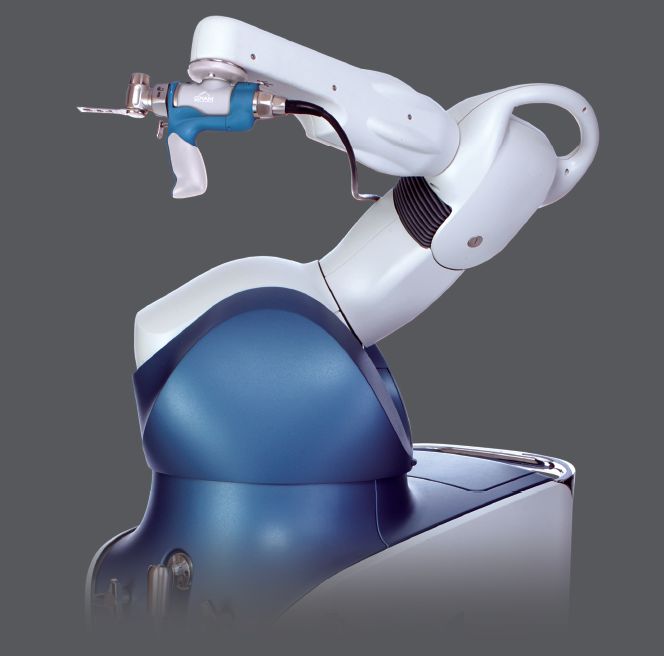Robotic knee replacement surgery is a significant medical procedure in which a malfunctioning knee joint is removed and replaced with an artificial one. This type of surgery is typically recommended for individuals who have experienced severe joint pain or stiffness that has not been alleviated with non-surgical treatments.
If you have been experiencing knee pain or are unable to find permanent relief, you may consider booking a consultation with Mr Andrew Gong, a knee replacement surgery specialist based in Melbourne and surrounds.
What is Robotic Knee Replacement Surgery?
Robotic knee replacement involves the use of robotic-assisted technology to replace the damaged or worn-out parts of the knee joints and is a minimally invasive procedure.
During the surgery, a surgeon uses a robotic arm to precisely guide surgical instruments to remove the damaged bone and cartilage, and then implant a pre-measured and pre-shaped implant into the knee.
The robot allows the surgeon to have a better view and more precise control of the procedure, resulting in greater accuracy, shorter operative time, and reduced pain and scarring.

Symptoms a Robotic Surgery May Be Necessary
A surgeon may recommend a robotic knee replacement surgery if you experience any of the following symptoms:
- Severe knee pain when walking
- Swelling in the knee joint
- Chronic knee inflammation
- Difficulty walking
- Unable to bend or straighten the knee
- Loss of flexibility or range of motion in the knee joint
- Inability to perform daily activities due to knee pain
- Pain from knee arthritis
- To correct leg deformity
Benefits of Having a Robotic-Assisted Surgery
There are numerous benefits to having a robotic knee replacement surgery, they include:
- Reduced Recovery Time: Robotic knee replacement enables the surgeon to perform a more precise and accurate procedure, resulting in less pain and less time required for recovery.
- Increased Mobility: Robotic knee replacement enables the patient to have a greater range of motion, more stability in the knee joint, and improved flexibility.
- Reduced Risk of Complications: Robotic knee replacement reduces the risks of complications such as infection and blood clots, as well as the risk of the implant being misaligned.
- Improved Accuracy: Robotic knee replacement enables the surgeon to make more precise incisions, resulting in more accurate implant placement and improved patient outcomes.
- Enhanced Comfort: Robotic knee replacement allows for a more comfortable and less invasive procedure, resulting in less pain for the patient.
- Improved Results: Robotic knee replacement enables the surgeon to customise the procedure to the individual patient, resulting in improved patient outcomes.
- Relieve Pain
Robotic Knee Replacement Risks to Consider
Although uncommon, even minimally invasive procedure carries risks, that should be considered, which include:
- infection
- blood clots
- nerve damage
- adverse reaction to the anesthesia
- pain
- stiffness
- swelling
- instability
- risk of dislocation
- deep vein thrombosis

How a Robotic Knee Replacement Procedure is Performed
The first step in the procedure is to make a small incision in the patient’s leg, allowing the surgeon access to the knee joint. The surgeon then inserts a haptic robotic arm into the incision. The robotic arm is equipped with a camera and tiny surgical instruments.
The surgeon then views a 3D image of the patient’s knee joint on a monitor. Using the robotic arm, the surgeon can make precise, controlled movements to accurately remove the damaged bone and cartilage.
The surgeon then positions the artificial knee joint and attaches it to the remaining healthy bone. The robotic arm is then removed from the incision and the wound is closed up with sutures.

Robotic Knee Replacement Surgery Post-Operative Recovery
Following a robot-assisted knee replacement surgery, the recovery period typically lasts 6-8 weeks. To ensure the best possible outcome, it is important to heed the instructions of the surgeon and physical therapist.
Initially, patients may need to use crutches for a period of time and wear a bandage or compression stocking to reduce swelling and provide support. A physical therapist may provide exercises to be done at home in order to strengthen and stabilise the knee.
Robotic knee replacement cost
The cost of a robotic knee replacement surgical procedure at any of our Melbourne clinics will depend on your individual knee condition.
Once Mr Andrew Gong has conducted a thorough assessment, which may include blood tests, X-rays or ct scans, he will be able to provide a detailed quotation.
This will include the pricing of the surgical procedure, the hospital stay and the anaesthetist. We will also advise if any rebates apply for Medicare or any other health insurance.
How can Mr Andrew Gong help with your
partial knee replacement or
total knee replacement robotically?
Mr Andrew Gong is an experienced orthopaedic surgeon that has successfully completed dozens of robotic knee replacement and reconstruction surgeries with cutting-edge technology and techniques. He is fellowship trained in several knee procedures.

Our Experienced Doctor
Mr Andrew Gong
MBBS, FRACS (Orth), F.A.Orth.A
Mr Andrew Gong is a highly skilled orthopaedic surgeon in Melbourne, with over two decades of experience in knee replacement surgeries. He is a fellow of the Australian Orthopaedic Association (AOA), a fellow of the Royal Australasian College of Surgeons (RACS) and an overseas affiliate member of the American Academy of Orthopaedic Surgeons.
How to Schedule a Consultation
If you would like to schedule an appointment to see Mr Andrew Gong, please do so via the following methods:
Our Locations
- Box HillEpworth Eastern, East Wing Tower
Level 14, Suite 14.3
25 Nelson Road, Box Hill VIC 3128
- HealesvilleGet Well Clinic
408 Maroondah Hwy
Healesville VIC 3777, Australia
- RichmondMelbourne Bone and Joint Clinic
27 Erin Street
Richmond VIC 3121, Australia
Frequently Asked Questions
Is robotic knee joint replacement surgery better?
How long does a robotic-assisted knee replacement last?
Robotic arm-assisted surgery vs traditional knee replacements which is better?
It is impossible to determine which is better without more information. Robotic knee replacement surgery is generally considered to be a newer, more precise form of knee replacement surgery. It may not be suitable for all patients though as it will depend on their condition and other mitigating factors.
Normal knee replacement surgery is also a highly successful procedure and may be better for some patients depending on their individual needs. Ultimately, the best option for any patient should be determined by a qualified medical professional.
References:
https://www.orthopaedicsvictoria.com.au/surgeons/andrew-gong/
https://www.pennmedicine.org/for-patients-and-visitors/find-a-program-or-service/orthopaedics/knee-pain/knee-surgery/knee-replacement-surgery/robotic-knee-replacements
https://www.healthpartners.com/blog/robotic-knee-replacement-surgery/
https://utswmed.org/medblog/robotic-knee-replacement/




